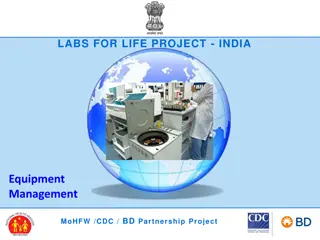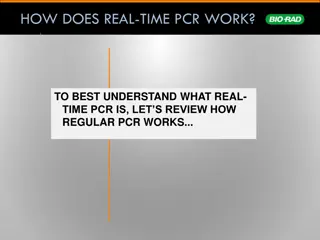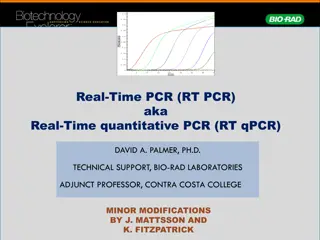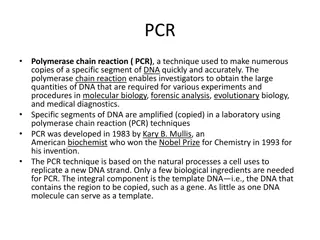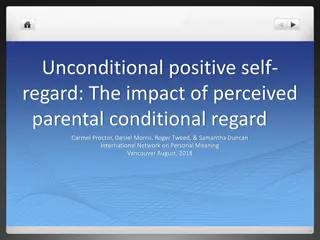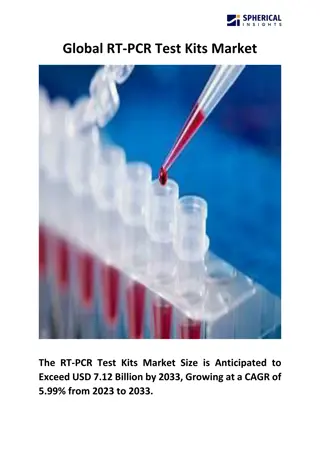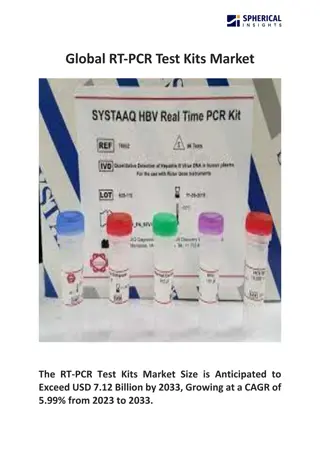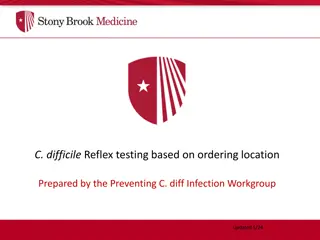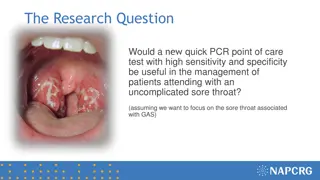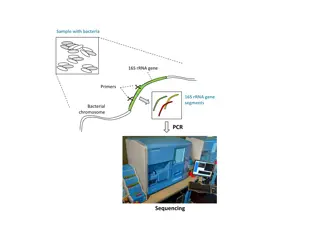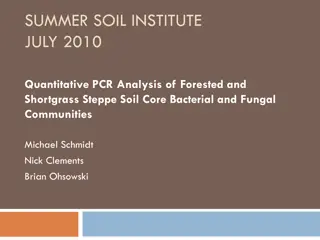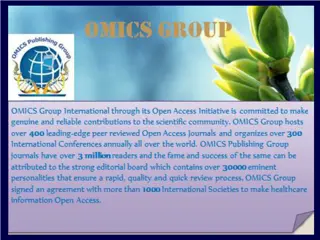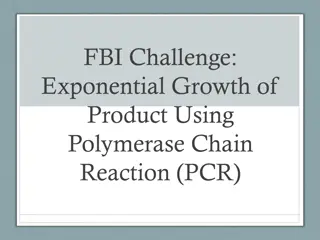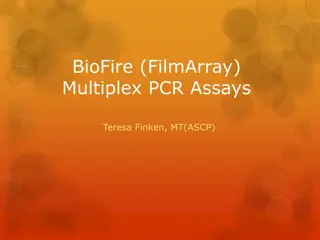
Polymerase Chain Reaction (PCR) in Molecular Biology
Explore the technique of Polymerase Chain Reaction (PCR) used in molecular biology to amplify DNA segments. Learn about the principles, components, types, steps, and applications of PCR, along with its significance in biotechnology labs. Discover how PCR has revolutionized DNA replication since its development in 1983 by Kary Mullis.
Download Presentation

Please find below an Image/Link to download the presentation.
The content on the website is provided AS IS for your information and personal use only. It may not be sold, licensed, or shared on other websites without obtaining consent from the author. If you encounter any issues during the download, it is possible that the publisher has removed the file from their server.
You are allowed to download the files provided on this website for personal or commercial use, subject to the condition that they are used lawfully. All files are the property of their respective owners.
The content on the website is provided AS IS for your information and personal use only. It may not be sold, licensed, or shared on other websites without obtaining consent from the author.
E N D
Presentation Transcript
StudyMafia.Org Polymerase Chain Reaction Submitted To: Submitted By: Studymafia.org Studymafia.org
Table Contents Definition Introduction Principle of PCR Components of PCR Types of PCR Steps of PCR Applications of PCR Conclusion 2
Definition PCR or Polymerase Chain Reaction is a technique used in molecular biology to create several copies of a certain DNA segment. 3
Introduction This technique was developed in 1983 by Kary Mullis, an American biochemist. PCR has made it possible to generate millions of copies of a small segment of DNA. This tool is commonly used in the molecular biology and biotechnology labs. 4
Principle of PCR The PCR technique is based on the enzymatic replication of DNA. In PCR, a short segment of DNA is amplified using primer mediated enzymes. DNA Polymerase synthesises new strands of DNA complementary to the template DNA. The DNA polymerase can add a nucleotide to the pre-existing 3 -OH group only. Therefore, a primer is required. Thus, more nucleotides are added to the 3 prime end of the DNA polymerase. 6
Components of PCR DNA Template The DNA of interest from the sample. DNA Polymerase Taq Polymerase is used. It is thermostable and does not denature at very high temperatures. Oligonucleotide Primers- These are the short stretches of single-stranded DNA complementary to the 3 ends of sense and anti-sense strands. 7
Components of PCR Deoxyribonucleotide triphosphate These provide energy for polymerization and are the building blocks for the synthesis of DNA. These are single units of bases. Buffer System Magnesium and Potassium provide optimum conditions for DNA denaturation and renaturation. It is also important for fidelity, polymerase activity, and stability. 8
Types of PCR Real-time PCR In this type, the DNA amplification is detected in real-time with the help of a fluorescent reporter. The signal strength of the fluorescent reporter is directly proportional to the number of amplified DNA molecules. 9
Types of PCR Nested PCR This was designed to improve sensitivity and specificity. They reduce the non- specific binding of products due to the amplification of unexpected primer binding sites. 10
Types of PCR Multiplex PCR This is used for the amplification of multiple targets in a single PCR experiment. It amplifies many different DNA sequences simultaneously. 11
Types of PCR Quantitative PCR It uses the DNA amplification linearity to detect, characterize and quantify a known sequence in a sample. Arbitrary Primed PCR It is a DNA fingerprinting technique based on PCR. It uses primers the DNA sequence of which is chosen arbitrarily. 12
Steps of PCR Denaturation Denaturation occurs when the reaction mixture is heated to 94 for about 0.5 to 2 minutes. This breaks the hydrogen bonds between the two strands of DNA and converts it into a single-stranded DNA. 13
Steps of PCR Annealing The reaction temperature is lowered to 54- 60 for around 20-40 seconds. Here, the primers bind to their complementary sequences on the template DNA. 14
Steps of PCR Elongation At this step, the temperature is raised to 72-80 . The bases are added to the 3 end of the primer by the Taq polymerase enzyme. This elongates the DNA in the 5 to 3 direction. The DNA polymerase adds about 1000bp/minute under optimum conditions. 15
Applications of PCR Medicine Testing of genetic disease mutations. Monitoring the gene in gene therapy. Detecting disease-causing genes in the parents 16
Applications of PCR Forensic Science Used as a tool in genetic fingerprinting. Identifying the criminal from millions of people. Paternity tests 17
Applications of PCR Research and Genetics Compare the genome of two organisms in genomic studies. In the phylogenetic analysis of DNA from any source such as fossils. Analysis of gene expression. Gene Mapping 18
Conclusion Polymerase chain reaction (abbreviated PCR) is a laboratory technique for rapidly producing (amplifying) millions to billions of copies of a specific segment of DNA, which can then be studied in greater detail. 20
Thanks To StudyMafia.org


